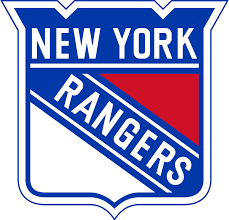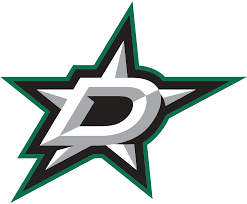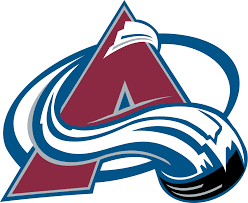
1. Washington Capitals– 31-17-5 (67 points, 53 GP)
After spending a couple of months figuring themselves out and weathering the storm that’s been Braden Holtby‘s second-to-last career worst season (his 2.76 goals against average and .915 save percentage in 39 games played are better and the same as his 2013-14 2.85 GAA and .915 SV% in 48 games played respectively).
It’s a bit of an off year for Washington, but even an off year for the Capitals is still a pretty good season, considering they’re currently first in a division that is more active than a lava lamp in terms of rising and falling.
Washington has a plus-11 goal differential through 53 games played despite the loss of Marcus Johansson in a trade with the New Jersey Devils this offseason and an injured Andre Burakovsky seeing limited time so far. That doesn’t even mention the loss of depth for the Capitals last July either– remember Justin Williams (signed with Carolina) and Karl Alzner (signed with Montreal)?
Luckily for the Capitals they only have about $412,000 in cap space as I write, so their trade deadline plans are pretty much already determined for them.
If they’re able to dump a guy like Brooks Orpik— and his $5.500 million cap hit that runs through next season– that would provide the organization with some much needed relief.
Potential assets to trade: F Jay Beagle, D Brooks Orpik
Potential assets to acquire: D Cody Franson (CHI), D Mike Green (DET), F Mark Letestu (EDM), F Patrick Maroon (EDM), D Nick Holden (NYR), D Ian Cole (PIT), F Thomas Vanek (VAN)

2. Pittsburgh Penguins– 30-22-3 (63 points, 55 GP)
After bouncing around the Metropolitan Division standings, the two-time defending Stanley Cup champion Pittsburgh Penguins are currently four points behind first place in the division.
Much like his rival in Washington, Matthew Murray is having a season to forget. Injuries and the death of his father have taken a toll on the two-time Cup winning goaltender, limiting Murray to just 34 games thus far with a 2.97 GAA and .903 SV% (again, both career worsts– though he is in just his second full season since his 13 GP in 2015-16).
Despite their plus-three goal differential and gifted scorer (turned 2018 All-Star snub), Phil Kessel (24-41–65 totals in 55 games), the Penguins have been porous on defense. Pittsburgh’s best defenseman, Kris Letang, is a minus-15 through 52 games played.
Only Justin Schultz (plus-5, 38 GP) and Jamie Oleksiak (plus-6, 20 GP– split between Dallas and Pittsburgh) are positive plus/minus blue liners.
Since November, Pittsburgh has been trying to move defenseman, Ian Cole– though head coach, Mike Sullivan, has been forced to play him (thereby keeping him on the Penguins roster) due to injuries affecting Schultz and friends.
Antti Niemi didn’t pan out and bring stable backup goaltending to the Steel City (he’s since departed via waivers to Florida, then Montreal). Tristan Jarry and Casey DeSmith have been left to pick up the tab with some impressive performances at times.
Midseason acquisitions F Riley Sheahan, as well as Oleksiak, have not been enough to fill holes left by Nick Bonino (the forward signed with Nashville in July) and Trevor Daley (left via free agency, landed in Detroit) respectively.
But with roughly $425,000 in cap space to work with currently, the Penguins can’t afford to make much noise on February 26th– but they should definitely snag a defenseman and rental backup goaltender.
Potential assets to trade: D Ian Cole, D Brian Dumoulin, F Tom Kuhnhackl, F Carl Hagelin, D Matt Hunwick, F Riley Sheahan
Potential assets to acquire: F Sam Reinhart (BUF), D Cody Franson (CHI), D Mike Green (DET), F Mark Letestu (EDM), F Patrick Maroon (EDM), F Michael Grabner (NYR), D Nick Holden (NYR), F Derick Brassard (OTT), F Jean-Gabriel Pageau (OTT), G Aaron Dell (SJ), D Erik Gudbranson (VAN), F Thomas Vanek (VAN), D Jason Garrison (VGK), G Michael Hutchinson (WPG)

3. New Jersey Devils– 27-17-8 (62 points, 52 GP)
New Jersey has almost $8.000 million to work with currently as things approach the trade deadline at the end of the month.
The Devils are one of the biggest surprises this season east of the Mississippi River.
First overall pick in the 2017 draft, Nico Hischier, has been quietly setting the tone with forwards, Miles Wood, Jesper Bratt and Pavel Zacha in the resurgence of youth. Travis Zajac is back in his dominant, physical, ways and the Sami Vatanen–Adam Henrique trade has worked out quite well for both teams.
And that’s not even mentioning Taylor Hall and Kyle Palmieri.
Will Butcher is quite the offensive threat on the blue line and John Moore is firing on all cylinders. Despite Marcus Johansson’s concussion, New Jersey hasn’t faced much adversity in overcoming injuries this year.
There’s a lot of cap room to work with, but not a whole lot that this team can really give up to bring in the best guys on the trade market, like Evander Kane, unless the Devils are comfortable parting ways with prospects and draft picks (spoiler alert, they might be).
New Jersey really should be in the hunt for Kane, Rick Nash, Max Pacioretty, David Perron and other great offensive assets– either as the front-runner or the stealthy dark-horse that’ll make one or two big moves to carry them to glory.
The Devils have the time and space to add a veteran forward or defenseman that might eat some salary, but put them lightyears beyond their Metropolitan counterparts.
It’s a buyers market.
Potential assets to trade: F Ben Coleman, F Jimmy Hayes, D Ben Lovejoy, F Drew Stafford
Potential assets to acquire: F Evander Kane (BUF), D Tyson Barrie (COL), D Mike Green (DET), F Patrick Maroon (EDM), F Alex Galchenyuk (MTL), F Max Pacioretty (MTL), F Michael Grabner (NYR), D Ryan McDonagh (NYR), F Rick Nash (NYR), F Jean-Gabriel Pageau (OTT), F Tyler Bozak (TOR), G Aaron Dell (SJ), F Thomas Vanek (VAN), F James Neal (VGK), F David Perron (VGK), G Michael Hutchinson (WPG)

4. Philadelphia Flyers– 25-19-9 (59 points, 53 GP)
Aside from the Boston Bruins, Tampa Bay Lightning and Vegas Golden Knights, the Philadelphia Flyers are one of the hottest teams in the league right now.
Goaltender, Brian Elliott, has found his top-notch form once again while Travis Konecny and Claude Giroux are rolling along. With almost $3.000 million to spend at the deadline, the Flyers could make some improvements to their team.
Trading away Brayden Schenn was costly for Philadelphia this offseason, but thankfully Jakub Voracek and the rest of the roster decided to pick up some of the points left behind by Schenn’s departure.
Adding Jori Lehtera, on the other hand, was a big mistake– both in production value and in cap management.
The Flyers could really solidify their offense with one or two moves and probably should anchor their defense with at least a depth blue liner or two coming down the stretch. Someone like David Perron, Patrick Maroon or Nic Petan could flourish in the Philly system. Meanwhile, a defenseman like Cody Franson would help put them over the edge if someone’s injured.
Potential assets to trade: D Radko Gudas, F Jori Lehtera, F Matt Read, F Dale Weise
Potential assets to acquire: D Cody Franson (CHI), D Jack Johnson (CBJ), F Mark Letestu (EDM), F Patrick Maroon (EDM), D Nick Holden (NYR), F David Perron (VGK), F Nic Petan (WPG)

5. Columbus Blue Jackets– 27-22-4 (58 points, 53 GP)
After getting a fast start out of the gate the Columbus Blue Jackets have really cooled off. It’s not that they’re a bad team, but rather, they’re just average.
Sergei Bobrovsky can’t stop the puck and play every other position too. Otherwise, the Blue Jackets would probably be first in the division. But good news, Columbus, you’ve got some cap space to work with at the end of the month.
As I write, the Blue Jackets have about $5.000 million to work with in cap room.
That’s good enough to bring in just about any player without considering what the future impact on the team his cap hit might have (unless Jarmo Kekalainen brings in a clear-cut rental player that won’t be re-signed in July). The point is this, Columbus has enough room to mess around with something valuable at the deadline, but they’re going to have to re-sign a plethora of core/future core pieces of the franchise this offseason.
The Blue Jackets aren’t doomed– they know their future plans more than anyone else.
But what could they bring in to make this team better? Someone. Is there anyone they could snag now and really shake things up as a contender moving forward? Short answer, yes.
For all of the return of Rick Nash to Columbus talk, well, that’s not ideal. Kekalainen should consider someone like Ryan McDonagh from the New York Rangers before taking back a guy like Nash– who will only break the franchise’s heart again in July when he goes back to the Rangers *bold prediction alert*.
Potential assets to trade: D Andre Benoit, D Jack Johnson
Potential assets to acquire: F Evander Kane (BUF), F Sam Reinhart (BUF)F Blake Comeau (COL), D Mike Green (DET), F Max Pacioretty (MTL), F Michael Grabner (NYR), D Ryan McDonagh (NYR), F Jean-Gabriel Pageau (OTT), F Mike Hoffman (OTT), F Thomas Vanek (VAN)

6. New York Islanders– 26-22-6 (58 points, 54 GP)
The biggest question heading into the 2018 trade deadline for the New York Islanders is the same one that’s been asked since Steven Stamkos signed his extension with the Tampa Bay Lightning– will John Tavares re-sign with the Islanders?
New York has expressed that they are not looking to trade Tavares should things go detrimentally south between now and February 26th, but if things do…
The Islanders have almost $1.500 million in cap space to play around with before the deadline. They also have 13 pending free agents at season’s end, meaning there’s plenty of options the franchise could pursue.
Should Tavares get a raise and a long-term deal? Absolutely.
The Islanders could pack it up and go home on this season given their injuries, lack of defense and well, let’s just say, things aren’t going so great for the team that ranks 31st (out of 31 NHL teams) in average attendance this season.
Or they could be active in trying to scrap together a good team centered around their current stars (Tavares, Mathew Barzal, Joshua Ho-Sang and others).
Potential assets to trade: F Josh Bailey, F Jason Chimera, F Casey Cizikas, D Thomas Hickey, D Dennis Seidenberg
Potential assets to acquire: F Sam Reinhart (BUF), D Tyson Barrie (COL), D Mike Green (DET), F Mark Letestu (EDM), F Patrick Maroon (EDM), F Alex Galchenyuk (MTL), F Jean-Gabriel Pageau (OTT), F Zack Smith (OTT), F Tyler Bozak (TOR), G Aaron Dell (SJ), F Thomas Vanek (VAN), D Erik Gudbranson (VAN), F David Perron (VGK)

7. Carolina Hurricanes– 24-21-9 (57 points, 54 GP)
New Carolina Hurricanes owner, Tom Dundon, might call an audible heading into this year’s trade deadline and decide to spend money on the roster. With almost $15.500 million in cap space, the Hurricanes are in the best possible position to land not just one or two of the big names floating around the rumor mill, but rather three or four quality pieces.
The trouble is, who would they get rid of, since their prospects and youth are worth keeping for further development and overall organizational growth?
Jeff Skinner is someone to build around. So are Teuvo Teravainen, Sebastian Aho, Elias Lindholm and Victor Rask.
Lee Stempniak might make his annual trip around the league, but other than that, who are the Hurricanes actually going to offer up from their forwards? If anything, Carolina would move a guy like Noah Hanifin given the contract extensions (and pay raises) that kick in next season for Brett Pesce and Jaccob Slavin.
Regardless, though they’re not out of contention, the Hurricanes could really use a goaltender to pull them through the stretch. This whole Cam Ward/Scott Darling thing isn’t working out.
Potential assets to trade: G Scott Darling, D Noah Hanifin, F Lee Stempniak, F Derek Ryan, draft picks
Potential assets to acquire: F Evander Kane (BUF), G Robin Lehner (BUF), D Cody Franson (CHI), D Tyson Barrie (COL), D Jack Johnson (CBJ), D Mike Green (DET), G Petr Mrazek (DET), F Max Pacioretty (MTL), F Tomas Plekanec (MTL), F David Desharnais (NYR), F Michael Grabner (NYR), D Ryan McDonagh (NYR), F Rick Nash (NYR), G Aaron Dell (SJ), F Thomas Vanek (VAN), F James Neal (VGK), F David Perron (VGK)

8. New York Rangers– 25-24-5 (55 points, 54 GP)
Look, the New York Rangers are still (technically speaking) in contention– but they absolutely shouldn’t waste another year of Henrik Lundqvist‘s career in the National Hockey League without a Stanley Cup.
The team they have right now? Yeah, they aren’t winning.
They’ve aged out. The core’s been decimated by the Vegas expansion draft and some offseason moves (namely trading Derek Stepan and Antti Raanta to Arizona after losing Oscar Lindberg to Vegas in June).
Not every player is washed up.
Some will find better homes and rejuvenate their careers before potentially signing with the Rangers in free agency and going back “home” *ahem, Rick Nash*.
Others will simply be a superb rental/long term participant in a franchise, like Michael Grabner.
Basically I’m saying that all the guys New York’s been rumored to trade should get traded and the team can pull off a quick turnaround with their up-and-coming youth, plus whatever they get in return for Nash, Grabner and Co.
And with only about $1.400 million in cap space, the Rangers could have some fun blowing things up (partially).
Build around Mika Zibanejad and friends. Do it, New York. Do it now.
Potential assets to trade: F David Desharnais, F Michael Grabner, D Nick Holden, D Ryan McDonagh, F Rick Nash, G Ondrej Pavelec, D Marc Staal, F Jimmy Vesey, F Mats Zuccarello
Potential assets to acquire: D Tyson Barrie (COL), D Jack Johnson (CBJ), F Alex Galchenyuk (MTL), F Mike Hoffman (OTT), F Jean-Gabriel Pageau (OTT), F Zack Smith (OTT), G Aaron Dell (SJ), F James Neal (VGK), F David Perron (VGK)
 Ending a five-year playoff drought is hard, but maintaining and growing upon that success can often be harder.
Ending a five-year playoff drought is hard, but maintaining and growing upon that success can often be harder.


 . In the 2012-’13 season, they didn’t make a single trade to receive additional draft picks in return. The last time they traded for a first-rounder? The ’14-’15 season when they shipped
. In the 2012-’13 season, they didn’t make a single trade to receive additional draft picks in return. The last time they traded for a first-rounder? The ’14-’15 season when they shipped  he Rangers. The casual fan must realize that these types of deals are necessary and, honestly, if it all pans out for them, the Rangers will have won their deadline deals. The goal for the Bruins and the Lightning is to win a Stanley Cup. Anything short of this, they just gave up coveted draft picks for players that may or may not help them in the future. Particularly, if Nash, a soon-to-be free agent, leaves Boston, the Rangers will have received three players and two draft picks for a guy that was likely to walk on them.
he Rangers. The casual fan must realize that these types of deals are necessary and, honestly, if it all pans out for them, the Rangers will have won their deadline deals. The goal for the Bruins and the Lightning is to win a Stanley Cup. Anything short of this, they just gave up coveted draft picks for players that may or may not help them in the future. Particularly, if Nash, a soon-to-be free agent, leaves Boston, the Rangers will have received three players and two draft picks for a guy that was likely to walk on them. Rykov, 20, is a 6’2″, 205-pound left-shot defenseman currently playing with SKA St. Petersburg in the Kontinental Hockey League (KHL). In 51 games with SKA St. Petersburg this season, Rykov has 2-12–14 totals.
Rykov, 20, is a 6’2″, 205-pound left-shot defenseman currently playing with SKA St. Petersburg in the Kontinental Hockey League (KHL). In 51 games with SKA St. Petersburg this season, Rykov has 2-12–14 totals.































You must be logged in to post a comment.